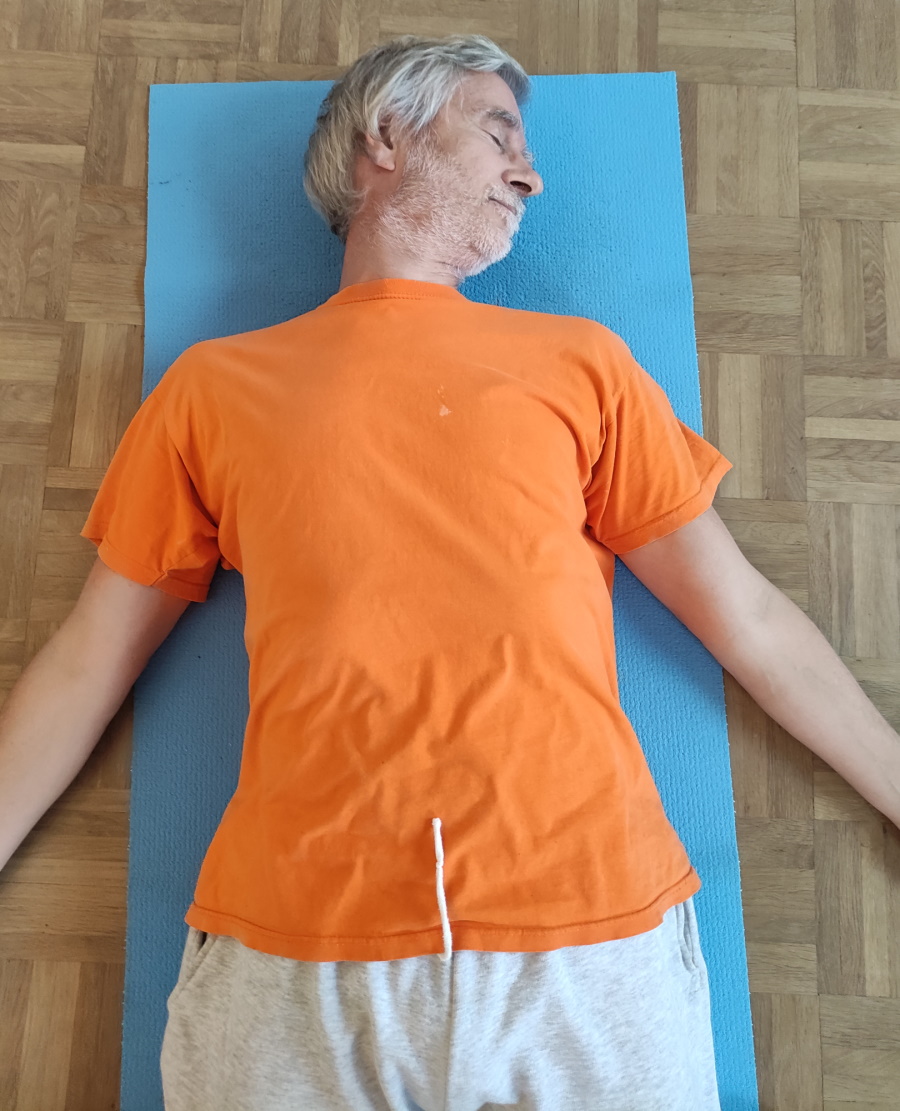yoga book / functional exercises / head rotation lying down

Instructions
- Lie on your back as in savasana.
- Turn the head slightly to the right side.
- Allow the head to sink further into the rotation to the right in accordance with gravity. Pull the back of the head slightly to the left with the left hand so that the head is as close as possible to the extension of the thoracic spine.
Details
- In cases of significant hyperkyphosis of the thoracic spine, support of the back of the head is necessary so that the head does not lie in reclination.
- The diaphragmatic plumb line of the upright head lies exactly in the centre of the foramen magnum, however, the rotation of the head on the floor does not occur around the centre of rotation of the occipitocervical junction (OCJ, also known as the craniocervical junction): craniocervical junction) as with free rotations, but as a rolling movement on the back of the head, i.e. with a different centre of rotation. This is why the head makes a lateral flexion to the right at the same time as it rotates, which makes it necessary to correct the position of the head to the left. It is helpful to pull with the contralateral hand. As a first approximation, the sternocleidomastoid can be required to lie in the centre of the body with its part pulled towards the sternum.
- The rotation should only occur according to gravity. The above argument also applies here: since the OCÜ is not the centre of rotation, the larger part of the skull lies on the face side of the centre of rotation, which brings the rotation on the centre of balance from the effect of gravity and muscle tension to a standstill. As the exercise progresses, the muscle tension gradually decreases so that this balance point shifts and the head rotates a little further.
- If the force of the rotatory muscles is used inadvertently, the ipsilateral muscles used for rotation can easily show a tendency to spasm. If a cramp occurs, its effects often last for several days, so care must be taken here.
- Even without using the strength of the rotatory muscles, intense sensations often arise in the muscles, which can have the character of a sharp stretch or tend to be cramp-like. Both should be handled with care and, if in doubt, the intensity should be reduced slightly to avoid side effects, which can last for several days due to the fibre type (predominantly type 1).
